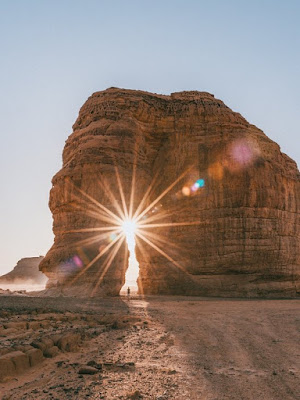Search This Blog
AlUla, The World's Masterpiece, is one of the oldest cities in the Arabian Peninsula and home to Hegra, a UNESCO World Heritage site. A land rich in historical, geological and geographical significance, this ancient city, once at the crossroads of The Silk Road and The Incense Route, has only recently been re-discovered by the world. In this blog, we invite you to discover the riches of this place and get inspired to plan your own trip by unveiling its history, heritage sites and natural.
Featured
- Get link
- X
- Other Apps
Most to visit
THE WORLD'S LARGEST LIVING MUSEUM
There are traces of many who have built AlUla over millennia, from the capital of the kingdoms of Dadan and Lihyan, to the trading hubs of the Nabataeans and into the Islamic era. Much of AlUla’s epic rock formations, valley and sandy desert remains an untouched expanse, with discoveries yet to be made threaded through its rich and layered past.
AlUla attracted pilgrims and travelers who came to take advantage of the abundant resources offered by its fertile oases. The people of AlUla have long been lauded for their hospitality, celebrated by famous explorers of the past for their warmth and authenticity. A vital crossroads along the famous incense-trading routes running from southern Arabia north into Egypt and beyond, AlUla's oases dotted the area and offered a much-needed respite for caravans of weary travelers. It remains a welcoming place to rest, commune and recharge.
HEGRA
SAUDI ARABIA'S FIRST UNESCO WORLD HERITAGE SITE
Visit Hegra to experience Saudi Arabia’s first UNESCO World Heritage Site. Here you’ll explore over 110 remarkably well preserved tombs set in a desert landscape, while learning about the ancient people and culture of AlUla.
Evidence for human presence and use of the site dates back beyond the 1st millennium BCE, but it was the location of the Nabataean city from the end of the 1st millennium BCE into the 1st millennium CE. The city was at its peak from the late 2nd century BCE to the 2nd century CE.
JABAL AL BANAT
Over 100 monumental tombs are carved into the rocky outcrops surrounding the ancient city of Hegra. Jabal AlBanat has one of the largest clusters of tombs; 29 tombs are carved on all sides of the sandstone rock.
DADAN
CHARTING ALULA’S RICH HISTORY
Amongst the most significant discoveries in all of AlUla is the city of Dadan, the capital of the Dadan and Lihyan kingdoms. The city, which was built meticulously from stone and astride the valley’s oasis, dates back between the late 9th and early 8th century BCE (Kingdom of Dadan) and 5th–2nd century BCE (Kingdom of Lihyan).
JABAL IKMAH
THE AWE-STRIKING INSCRIPTIONS OF ALULA
Across the AlUla Valley lie thousands of inscriptions in Aramaic, Dadanitic, Thamudic, Minaic and Nabataean.
Thousands of pre-Arabic inscriptions across numerous sites make AlUla an important location in studying the Arabic language. A mountain north of the AlUla Valley, AlAqra’a, features more than 450 early Arabic inscriptions. Naqsh Zuhayr, to the east, features one of the oldest inscriptions of the Islamic era — dating back to 24AH (644 CE). But no such site is more significant than Jabal Ikmah, home to the highest concentration of and most varied inscriptions in AlUla.
JABAL ALFIL
ELEPHANT ROCK
- Get link
- X
- Other Apps





Comments
Post a Comment